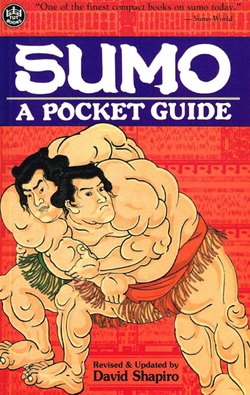Читать книгу Sumo a Pocket Guide - David Shapiro - Страница 9
На сайте Литреса книга снята с продажи.
ОглавлениеCHAPTER 3
The Long Climb
A new recruit enters sumo by becoming affiliated with a training facility called a hey a, a term commonly translated as "stable." Many heya are located near Tokyo's Ryogoku Station on the JR Sobu Line, for it was in this area that the first national sumo stadium, the Kokugikan, was constructed in 1909. There are about a dozen heya clustered around the newest Kokugikan, which opened in 1985 in the same vicinity, and almost fifty altogether (a list of heya addresses and phone numbers appears on pages 95-99). Most heya are relatively simple structures; ordinary wood-frame or concrete houses, each containing little more than a ring, a communal eatery, and some rather spartan living quarters. In keeping with Japan's overall prosperity though, there is a trend today toward building more impressive structures, with a sophisticated weight-training room being the most common addition.
The young hopeful must pass a physical examination, held six times a year (before each of the major tournaments), and must present the required documents (proof of junior high school graduation, parental consent, and a copy of the family register). He is then formally enrolled as an apprentice and is guaranteed nothing more than a roof, three square meals, long hours of hard work, and a chance at stardom. The newcomer might be a strapping farm boy or fisherman's son with little training in the sport, or a veteran college wrestler. But in any case, he has a long and difficult climb ahead of him.
These stables house a total of over 850 rikishi and all are competing in the struggle upward through a rigid system of ranks. Ascending through the sumo hierarchy is somewhat like climbing a mountain. Progress can be rather quick and painless at its broad-based entry level, but it becomes progressively more difficult as one approaches the steep and slippery summit. As a matter of fact, the word nobori, "to climb," is a popular suffix for a rikishi's ring name; it gives notice of his intention to climb to the summit of the sumo world.
There are six major divisions in sumo. These are best considered as forming a figurative mountain divided into two main groups. Its base is subdivided into four groups and its summit consists of two groups, with a wide disparity in the prestige and privileges accorded members of the bottom four and the top two. The four lower divisions are (from the bottom up): the Jonokuchi division, with about one hundred rikishi; the Jonidan division, with about three hundred; the Sandanme division, with about two hundred; and the Makushita division, fixed at 120 rikishi. Although the numbers in the divisions below Makushita vary, a little arithmetic reveals that this leaves only sixty-odd slots in the top two divisions—a precipitous summit indeed.
A novice, as a matter of fact, does not really begin to climb the mountain right away; he is only allowed to view it from a distance as he hikes towards it. For although he is officially a member of the sumo world, the bouts in his first tournament are considered mae-zumo (literally "pre-sumo") and his name will not appear on the banzuke, or "official list" of tournament rankings.
